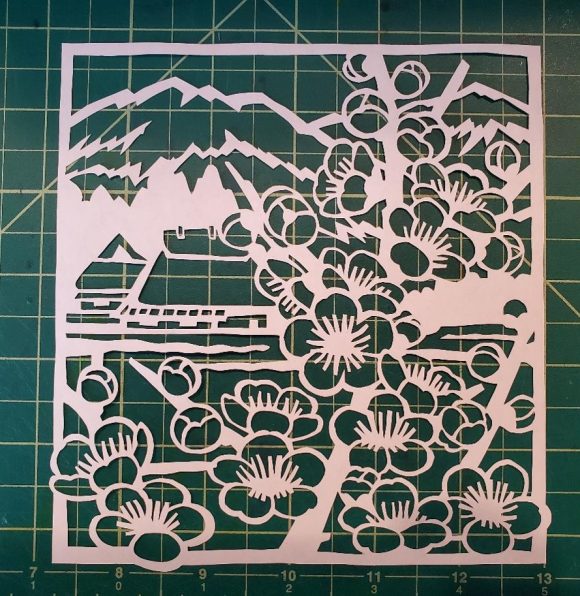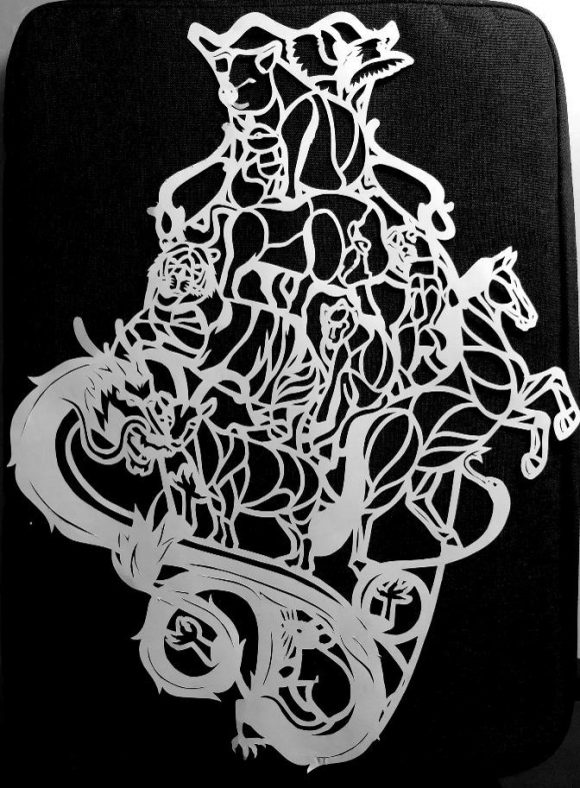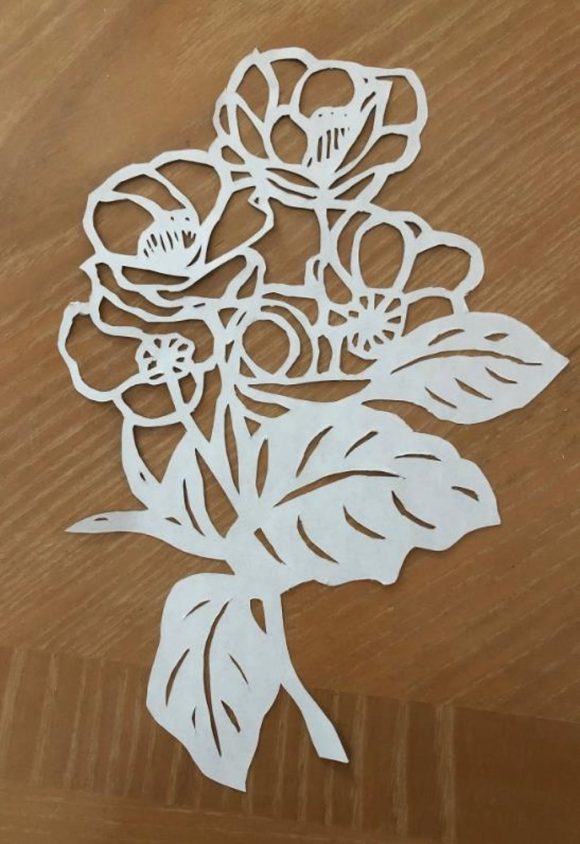
Students of Chinese and Japanese art inspired by Escalette Collection How art enhances online instruction
April 15, 2020
Instruction may be online, but that hasn’t stopped students from finding inspiration and pleasure in Wilkinson College’s Escalette Collection. Art History students in the class Exchange and Evolution in the Arts of China and Japan were given an assignment that encouraged them to engage with an artwork in a uniquely personal and creative way.
Papercutting is an ancient artform that has been practiced across cultures, from China to Mexico, Japan to Sweden. The Escalette has several papercuts in its collection, including one by Hong Kong-born, Los Angeles-based artist, Bovey Lee.

Bovey Lee, We Are All Mountaineers (Exit), 2018. 2019.2.1. Purchased with funds from the Escalette Endowment
Inspired by this work, students created their own papercuts, incorporating symbols or ideas they had been studying in their class on Chinese and Japanese art. Bovey Lee creates her work from imported silk-backed xuan paper, but working from home, the students used whatever materials they could get their hands on, from photocopier paper, to cardstock, to craft paper. While art history is most often a text-based discipline, creating something by hand gives students the chance to acquire a different sort of knowledge about their subject.
Shianne Jackson appreciated the freedom to accept mistakes: “What really inspired me on this project was Bovey Lee’s acceptance and incorporation of any mistakes that she may make while creating her work. I did end up cutting too far into one of the petals, but I worked with the mistake and I am happy with the results.”
For some, working with paper and knife was a welcome change of pace.
“It was very cathartic for me,” said Vivian Lun, ” since I’m always doing drawing for my animation classes so it was a breath of fresh air. I used to be an Art and Design student in secondary school, so I was used to doing paper cuts.”
Trisha Sakamoto reflected, “Learning about and imitating Bovey Lee’s papercuts was a truly rewarding experience as it introduced me to a new form of art that preserves history and culture, as well as portrays the societal concerns of today.”
The papercut was a chance for some students to revisit childhood. Candace Chen remembers, “Growing up as an Asian-American, my parents would send me to Chinese school on the weekends in hopes for me to form a deeper connection to my heritage. As part of their curriculum, each student was allowed to take an extracurricular; this is where I first learned how to paper cut in my art class. Doing this exercise in class with Professor Shen allowed me to relive my days at Chinese school and reminded me of the enjoyable afternoons where I was allowed to express myself while connecting to my background. Although it might not be perfect, this was fun and I am glad that I had the chance and the gentle reminder of the pleasure in these arts.”
Other students, such as Nellie Jalalian, found the assignment a way to build on the lectures they listen to at home: “I found the exercise to be very engaging because it allowed us to really get involved with the lecture and it was a great way to visualize what the process was to create such intricate papercuts.”
We invite you to explore all the works in the Escalette Collection by visiting our eMuseum.
Wilkinson College of Arts, Humanities, and Social Sciences is the proud home of the Phyllis and Ross Escalette Permanent Collection of Art. The Escalette Collection exists to inspire critical thinking, foster interdisciplinary discovery, and strengthen bonds with the community. Beyond its role in curating art in public spaces, the Escalette is a learning laboratory that offers diverse opportunities for student and engagement and research, and involvement with the wider community. The collection is free and open to the public to view.






